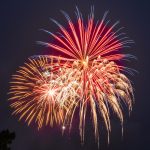Tucked away in the old ReachArts building on Burrill Street, several interns from Lynn, Salem and Swampscott are busy spending their summers working behind the scenes on the UV pilot program to help clean up King’s Beach.
Their day began at 10 a.m. sharp Wednesday, collecting the necessary equipment for testing the water at the pump station, followed by a short walk along Humphrey Street to the pilot station. The Daily Item spoke with three of the interns for the project, who went into detail about what a day on the job looks like.
“I’ve lived in Swampscott my whole life, and I teach sailing lessons at the Yacht Club, and it’s always been kind of known that King’s Beach wasn’t the cleanest and that we couldn’t sail there. … So, when I heard about the project, I thought it’d be a really cool opportunity to help,” Testing Supervisor Lola Muntiu, of Swampscott, said.
Aleana Benedetto, of Lynn, said she was encouraged to join the project because it aligned with her values and what she hopes to see happen for the City and the Town.

“My grandparents are from Swampscott, and I grew up along the beaches,” Benedetto said. “I thought it’d be really cool to work toward an initiative that made the beaches more swimmable.”
Allan Martinez, of Salem, said it’s interesting to see new things at a molecular level while he studies Chemistry at Salem State University. He added that he loves the environment and wishes to make an impact within local communities.
Muntiu explained that once they arrive at the UV station, it takes roughly half an hour to do all the testing at the site. “We do some testing here and some back at the lab,” she said. “We prepare the samples to test for bacteria and put them into a machine that tests the levels of bacteria.”
Once they made their way down into the testing site, Muntiu gave a rundown of how the station works. “We have to test between three hours of low tide, because if it’s not within that time-frame, some of the water can get washed up into the culverts and sucked up into the pumps, and so we wouldn’t get an accurate reading of how clean it is,” she said.
The UV system has two pumps — one for Lynn and one for Swampscott — that suck untreated water up into the tanks. Then, the water is treated with ultraviolet lights to help kill bacteria before being pumped out back into the culverts.
The interns also test the water that has been treated by UV and released back into King’s Beach. Muntiu said once the water has been treated, the bacteria levels they’ve been seeing are significantly lower than when the water comes in.
To keep the most accurate results, she said the data is updated daily.
Once the interns got set up for testing, they grabbed buckets of water from the influent.
“We have these buckets of infall and outfall that we collect, and so we grab the data for both before putting the data online,” Muntiu said.

Aside from sampling for levels of bacteria, Muntiu said they’re also looking to get readings of things like the temperature, ammonia, salinity, pH, and turbidity of the water.
Benedetto started testing the different buckets of water for ammonia while Martinez got ready to put on some heavy-duty green waders. He was tasked with going into the water to collect a sample and bring it back for testing.
Benedetto said he didn’t mind being out and grabbing water samples in the heat because the water was so cold.
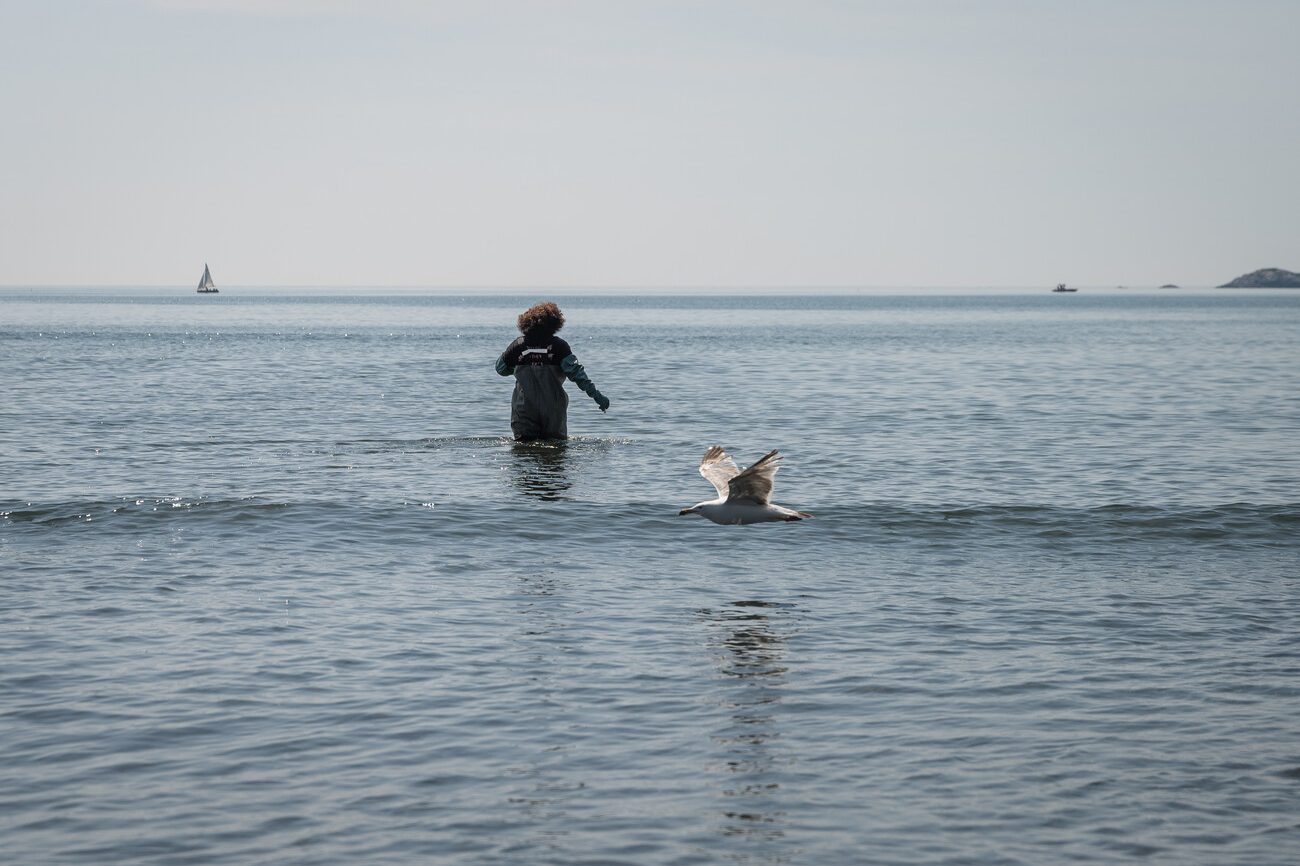
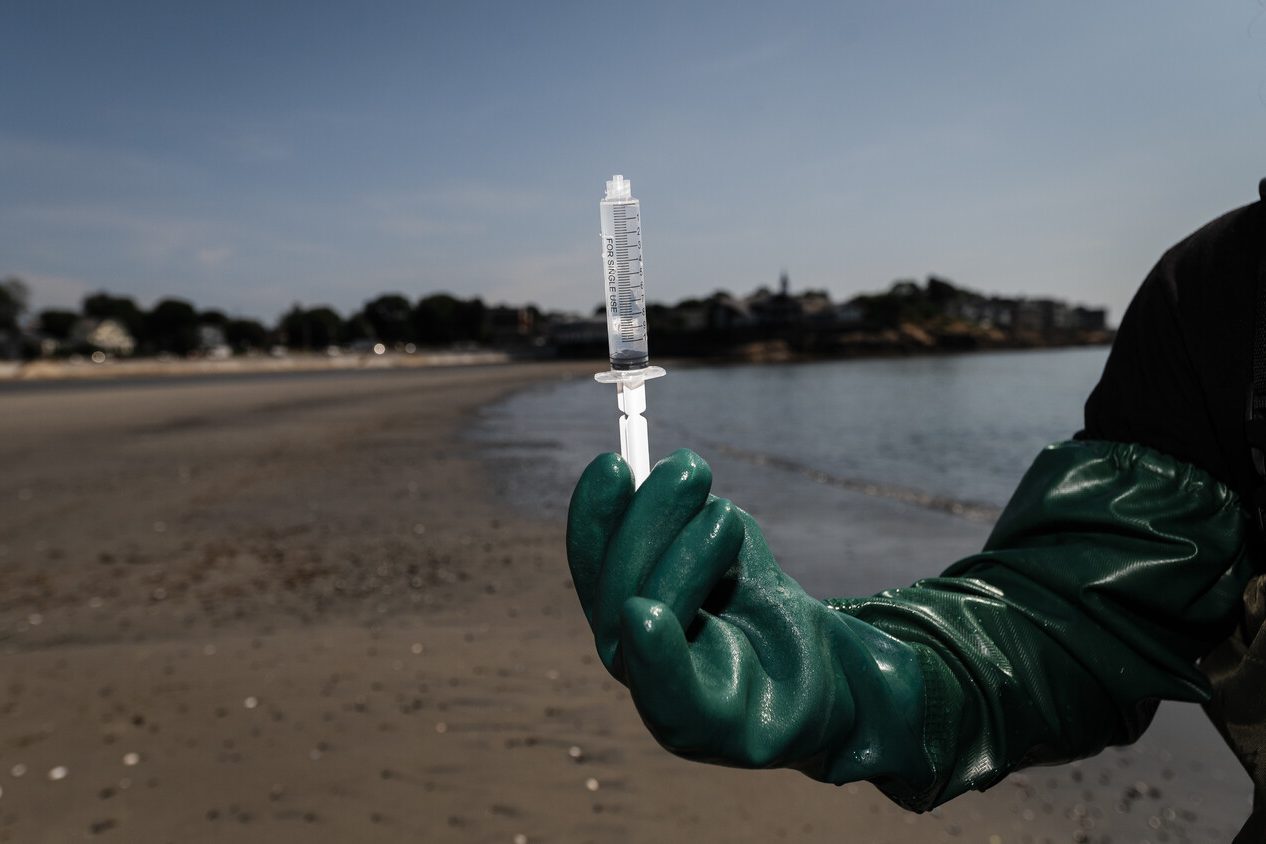
Muntiu explained that early on in the program, there were some issues with seaweed clogging the pipes. “It was around the first week of the pilot, and there was a big storm that washed the seaweed into the pipes. … But they put new screens in to help, and it’s been better since then,” she said.
“We’re not the ones to be making any final decisions, but I think the pilot program has definitely been helping,” Muntiu said.
When the work at the site was completed, the interns headed back to their lab on Burrill Street to prepare the samples for further testing. Benedetto combined the water samples with a yellow powder that would have a bioluminescent glow if bacteria was present in the water. It was then placed into a machine that reads the possible levels of bacteria before the data is subsequently published online.
Benedetto said it’s really fun to be working with kids her age on an important issue that impacts the community.
“I work with the same people every time I come down, and aside from talking and having fun, it’s nice working with kids on an issue like this,” she said. “I feel like I’m always learning. … It’s teaching young minds so many things.”


Photo: Spenser Hasak | Purchase this photo
UV Pilot Program intern Aleana Benedetto, of Lynn, samples water flowing from Lynn into the pump, on its way to be treated by ultraviolet light.

Photo: Spenser Hasak | Purchase this photo
UV Pilot Program intern Aleana Benedetto, of Lynn, samples water after it is treated with ultraviolet light as it's pumped out to King's Beach.
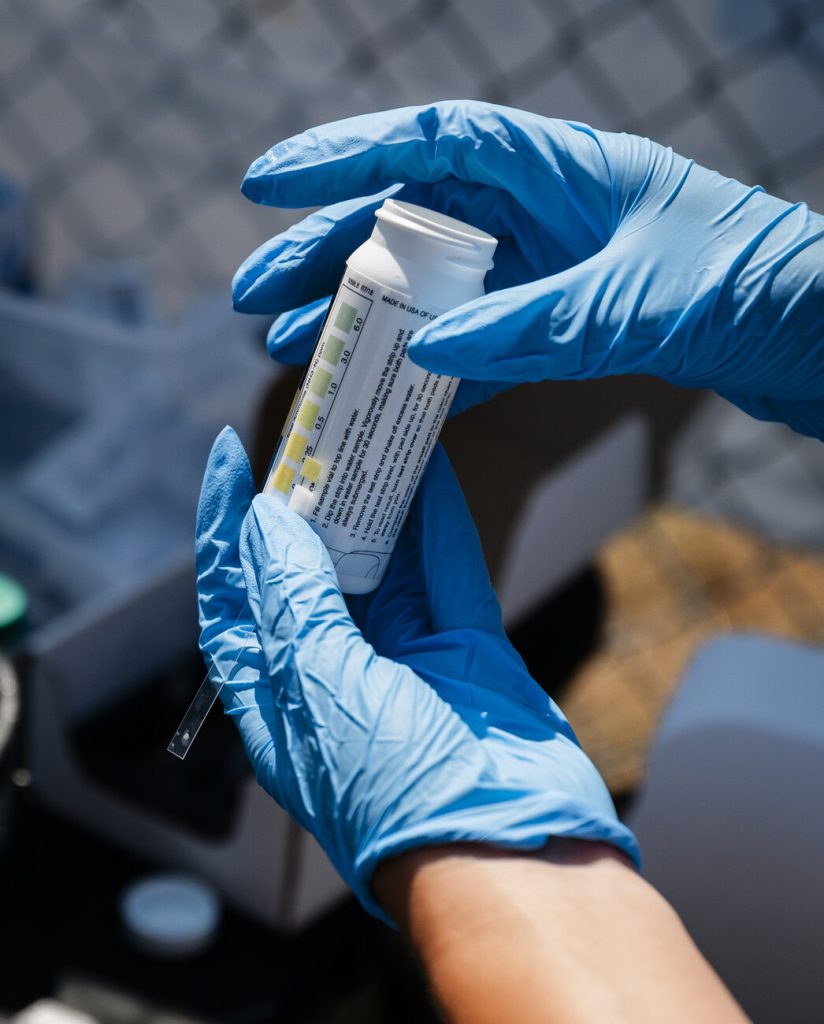
Photo: Spenser Hasak | Purchase this photo
UV Pilot Program intern Aleana Benedetto, of Lynn, tests the level of ammonia present in water flowing into the UV treatment from Lynn.
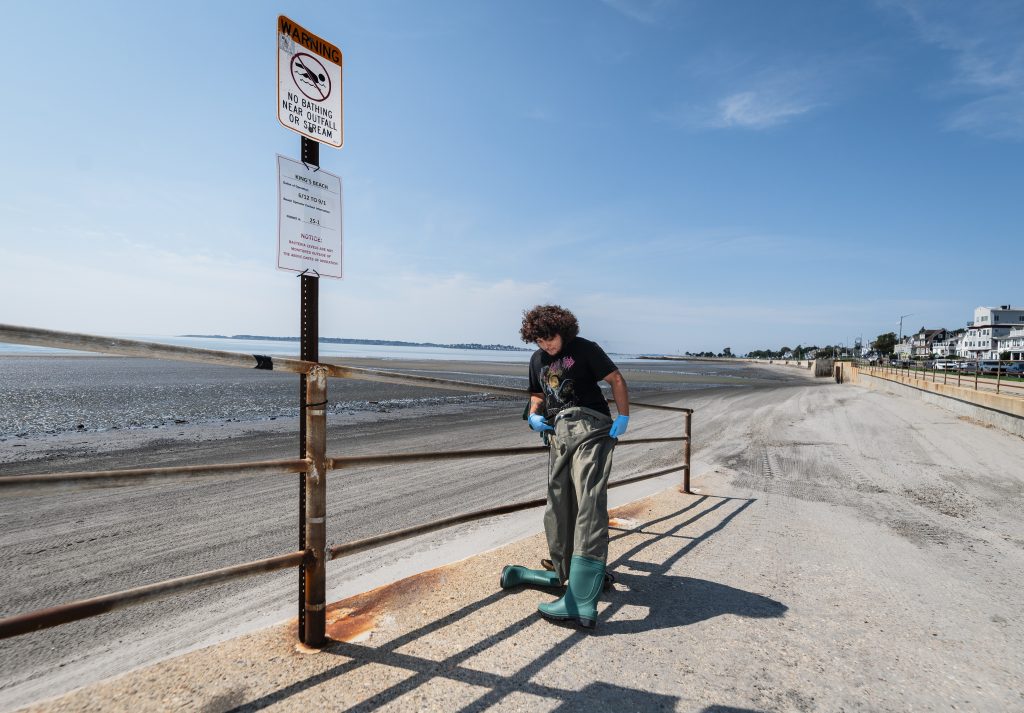
Photo: Spenser Hasak | Purchase this photo
UV Pilot Program intern Allan Martinez, of Salem, puts on waders so he can head out to King's Beach and take a sample of the sea water.
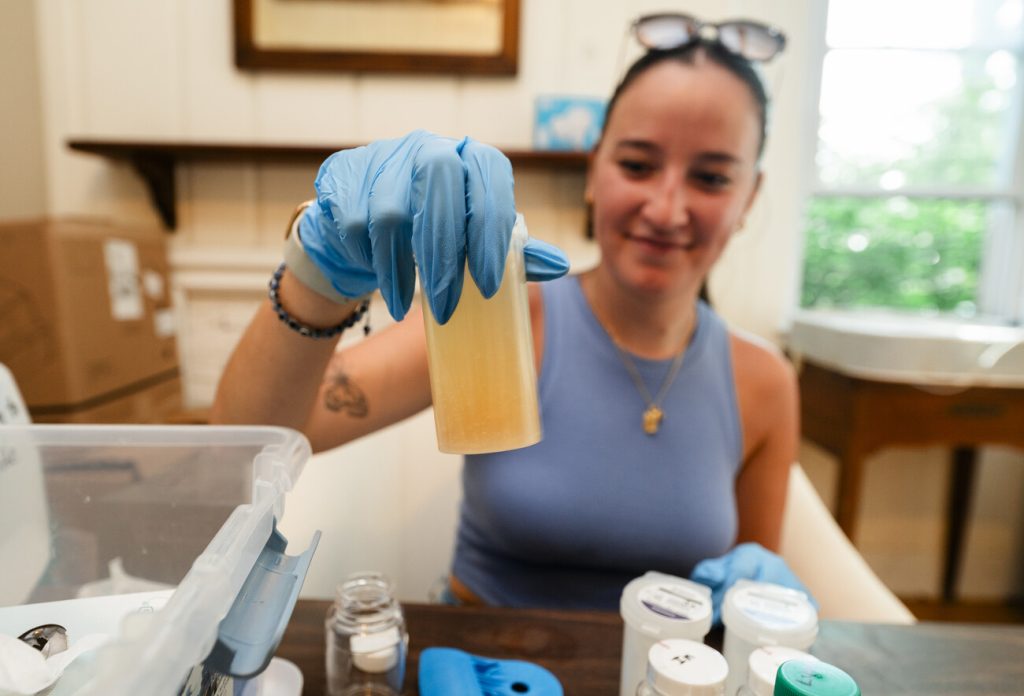
Photo: Spenser Hasak | Purchase this photo
UV Pilot Program intern Aleana Benedetto, of Lynn, combines water samples with a yellow powder that will have a bioluminescent glow if there is bacteria present in the water.

Photo: Spenser Hasak | Purchase this photo
UV Pilot Program intern Aleana Benedetto, of Lynn, combines water samples with a yellow powder that will have a bioluminescent glow if there is bacteria present in the water.
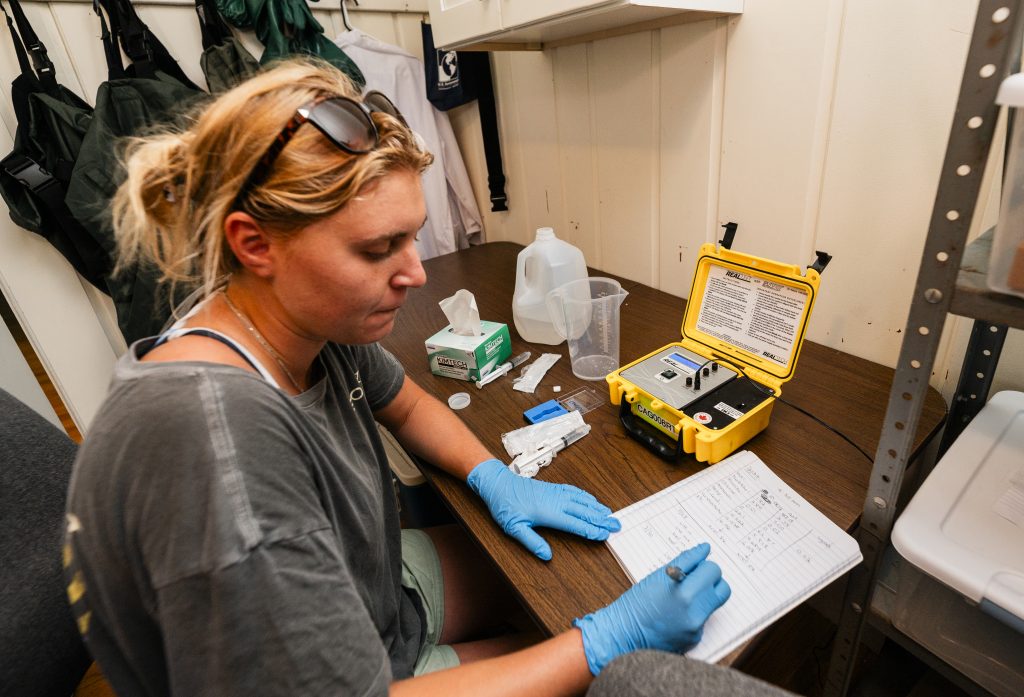
Photo: Spenser Hasak | Purchase this photo
Lola Muntiu, testing supervisor for the UV Pilot Program, tests to see how well ultraviolet light can pass through water samples taken at the Lynn/Swampscott line.
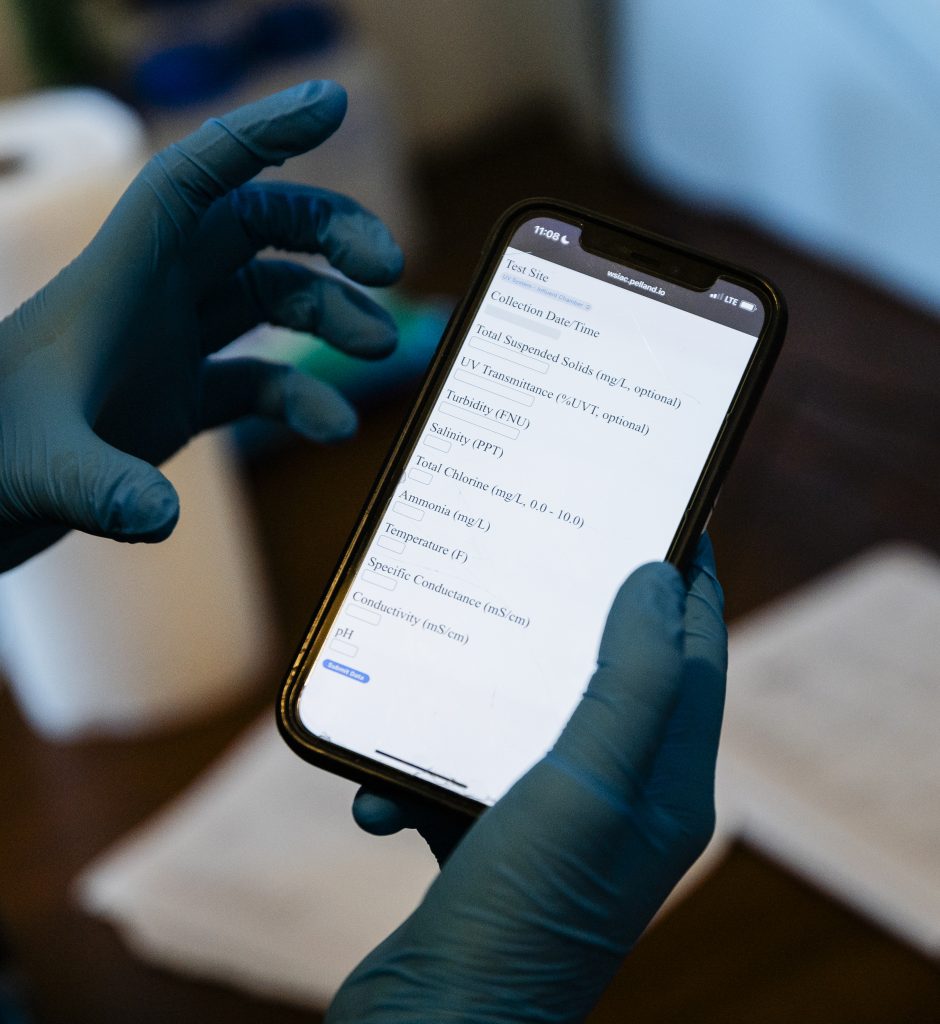
Photo: Spenser Hasak | Purchase this photo
Lola Muntiu, testing supervisor for the UV Pilot Program, shows the app where she and the interns input their testing data.
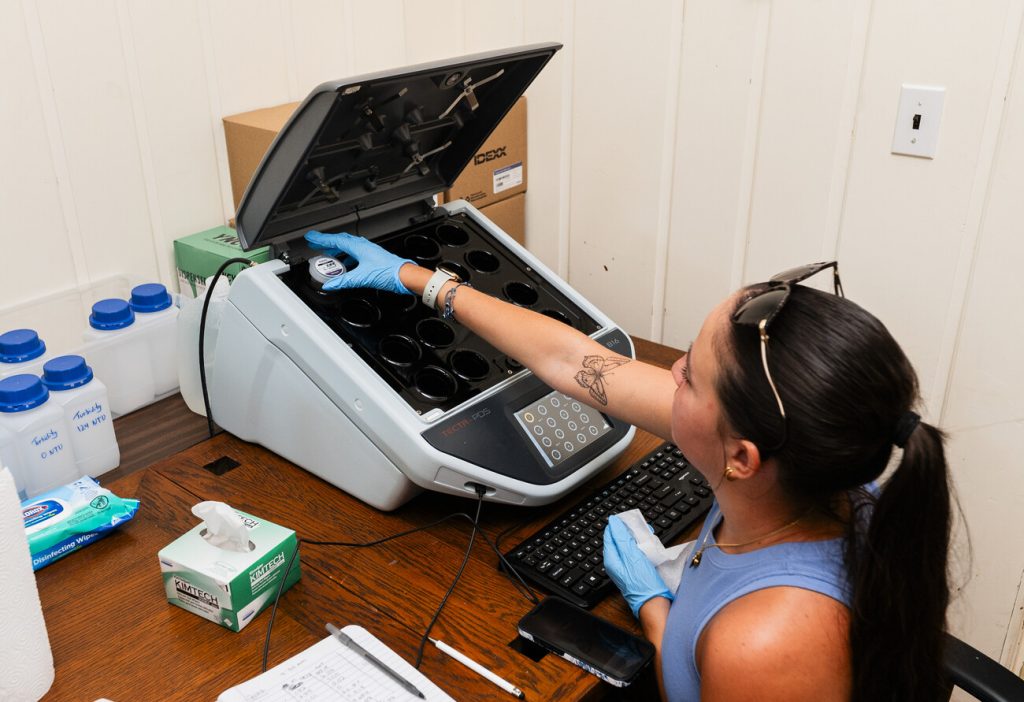
Photo: Spenser Hasak | Purchase this photo
UV Pilot Program intern Aleana Benedetto, of Lynn, puts water samples in a machine that will determine the levels of bacteria, if any, in the samples.


